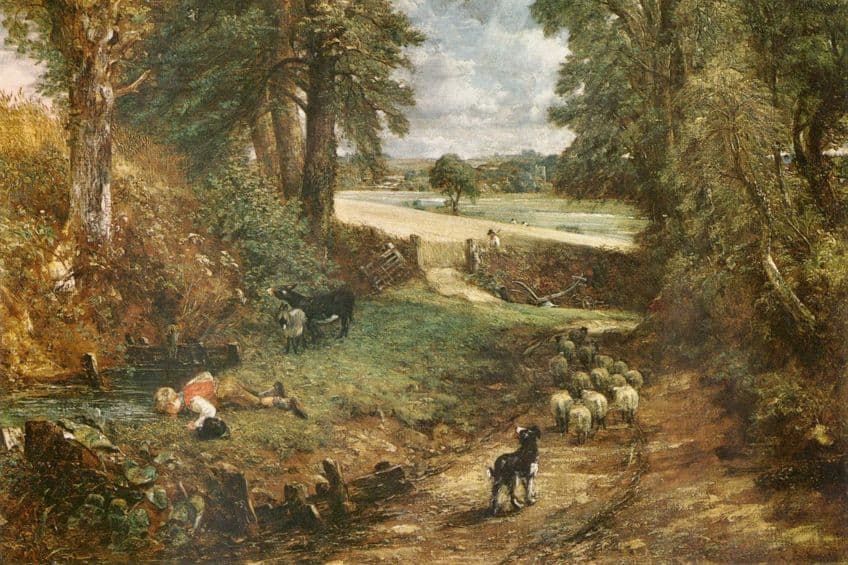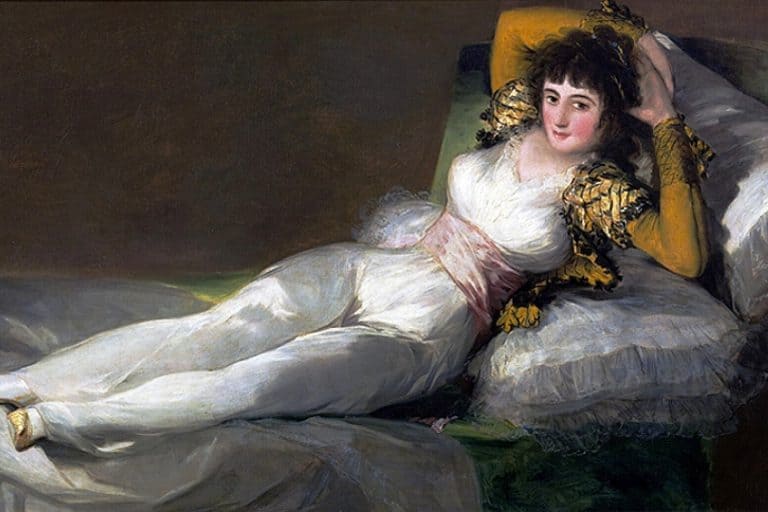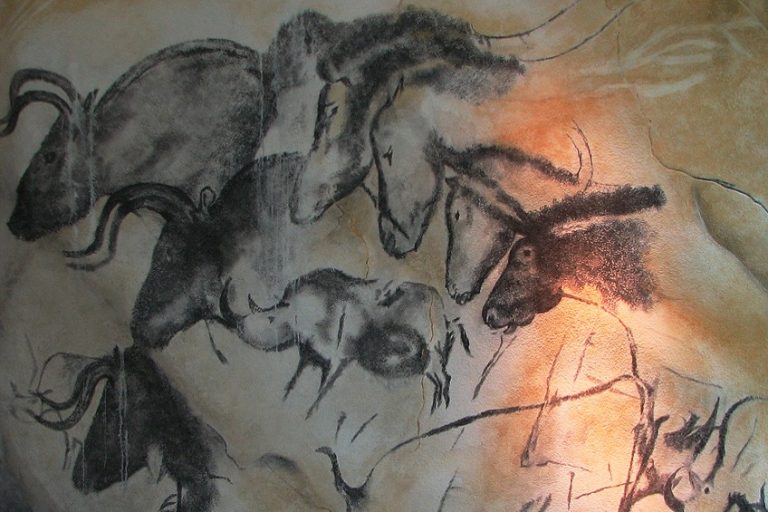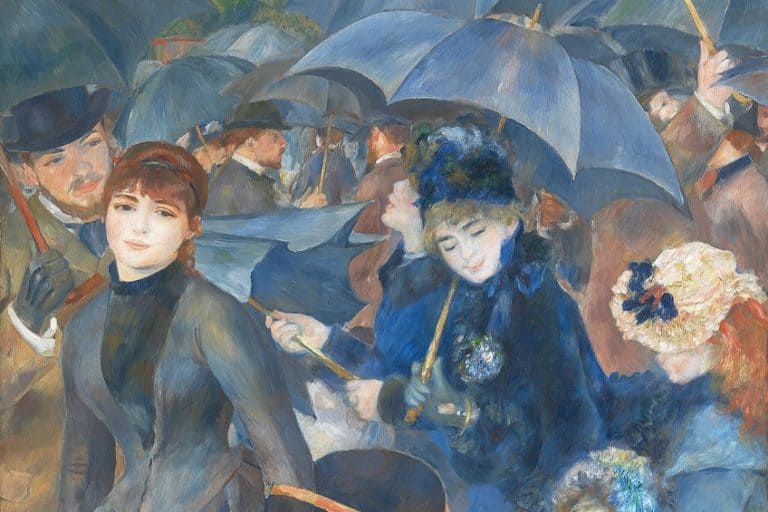“The Cornfield” by John Constable – A Romantic Artwork Analysis
John Constable’s The Cornfield is a timeless masterpiece that epitomizes the artist’s deep connection with nature and his revolutionary approach to landscape painting. Completed in 1826, this oil on canvas artwork captures the serene beauty of the English countryside, showcasing Constable’s meticulous attention to detail and his skillful use of light and color. Set against a backdrop of rolling hills and a dramatic sky, the focal point of the painting is a tranquil cornfield bathed in golden sunlight, evoking a sense of peace and nostalgia. The Cornfield is not only a stunning visual representation of rural life but also a testament to Constable’s enduring influence on the Romantic movement in art.
Key Takeaways
- The Cornfield, painted in 1826, captures the lush English countryside.
- It showcases Constable’s detailed and realistic style.
- The painting remains a celebrated piece in the National Gallery, London.
Historical Context
| Artist | John Constable (1776 – 1837) |
|---|---|
| Date Created | 1826 |
| Medium | Oil on canvas |
| Genre | Landscape |
| Period/Movement | Romanticism |
| Dimensions (cm) | 143 × 122 |
| Series/Versions | Single version |
| Where Is It Housed? | The National Gallery, London, United Kingdom |
| What It Is Worth | Not publicly auctioned; significant cultural and historical value |
John Constable’s masterpiece, The Cornfield, painted in 1826, captures the serene beauty of the English countryside in vivid detail. As a renowned oil painting, it portrays a young shepherd boy drinking from a pool along a lane, surrounded by the golden hues of a vast, rolling landscape. This scene is set near East Bergholt, a location Constable knew well, adding authenticity to his depiction.

The Cornfield stands out not only for its realistic and detailed portrayal of nature but also for its emotional connection to the landscape Constable cherished. Painted during the height of the Romanticism movement, this artwork reflects Constable’s deep appreciation and intimate knowledge of the English countryside, elements that resonated with many of his contemporaries and continue to captivate audiences today. Housed in the National Gallery, London, The Cornfield has been celebrated since its first exhibition at the Royal Academy in 1826. Originally titled The Drinking Boy by the artist himself, this painting underscores the ordinary yet profoundly beautiful scenes of rural life.
The attention to detail and emotional depth in this artwork make it a centerpiece of Constable’s collection and a significant piece in the history of art.
Reception and Critical Praise
When first exhibited at the Royal Academy in 1826, The Cornfield garnered much attention. Critics admired Constable’s realistic portrayal of the English countryside. They appreciated the painting’s detail and the natural light that seemed to emanate from the canvas. John Constable referred to the piece as The Drinking Boy. He highlighted the painting’s essence of rural peace. The boy drinking from a pool was seen as a symbol of innocence and connection to nature. In the years following its exhibition, the painting’s acclaim continued to grow. Art enthusiasts and other artists esteemed it for its idyllic and detailed depiction. It remains celebrated for capturing the essence of 19th-century rural England.

Constable’s Influence on Art
Constable’s work, particularly The Cornfield, influenced many artists both during his time and afterward. His focus on naturalism inspired the Romantic movement. Artists began to see the beauty in ordinary landscapes and rural scenes. The painting’s attention to detail and use of light inspired artists like J. M. W. Turner and later, the Impressionists. They sought to capture natural light and realistic scenes, much like Constable did. Moreover, The Cornfield helped shift artistic focus from grand historical or mythological subjects to everyday life and nature. This change influenced not just British artists but many across Europe.
Constable’s legacy is evident in the works of many later artists who embraced naturalism and the picturesque qualities of rural landscapes.
Artistic Elements and Style
John Constable’s The Cornfield showcases a blend of detailed composition, masterful use of light and color, and skilled technique in oil on canvas. Each element contributes to the painting’s realistic and idyllic depiction of the English countryside.

Composition and Subject Matter
The Cornfield depicts a young shepherd boy drinking from a pool along a lane bordered by trees. Besides the boy, the scene includes sheep, fields, and distant buildings. Foreground elements like the pool and the path enhance the sense of depth.
Constable’s strategic placement of trees and the winding lane naturally draws the viewer’s eye through the painting, highlighting its rural tranquility.

Use of Light and Color
Constable expertly uses light and shadow to accentuate the warmth of a summer’s day. The golden tones of the cornfield contrast with the cooler hues of the sky, creating a balanced and harmonious image. Subtle variations in green and brown add richness to the scene.
The interplay of light between the clouds and landscape enhances the painting’s realistic vision, inviting viewers to experience the serene beauty of the countryside.

Technique and Medium
Constable used oil on canvas to give texture and depth to the landscape. His brushwork ranges from fine, precise strokes for detail to broader, more expressive strokes for the sky and fields. This technique captures the essence of natural elements such as the soft foliage of trees and the shimmer of light on water.
The use of oil paint allowed Constable to achieve the vibrant colors and intricate details that define The Cornfield, making it a quintessential example of his commitment to realism in art.

Creation and Exhibition
The Cornfield was crafted with inspiration from nature and exhibited at the Royal Academy. The painting reflects his dedication to depicting the English countryside realistically. Constable drew inspiration from the rural landscapes of England. He often sketched scenes during his walks in the countryside. He aimed to capture the colors and light accurately. The Cornfield showcases a golden field, a stream, and a lane, which were elements he encountered regularly. This admiration for nature led to a detailed and vivid portrayal of the scene.
Many elements seem so lifelike because he carefully observed changes in weather and light.
Work in the Studio
In his studio, Constable transformed his outdoor sketches into a full painting. He spent countless hours refining the details. He used oil on canvas, allowing for vibrant colors and careful blending. His studio work included modifying the composition to emphasize the idyllic charm. This careful attention to detail is evident in the final painting. Friends and art committee members appreciated his dedication to realism.

Debut at the Royal Academy
The Cornfield was first exhibited at the Royal Academy in 1826. This prestigious unveiling marked a significant achievement for Constable. The painting received praise for its realistic depiction and detailed work. It was a time of critical acclaim for him, solidifying his reputation. The artwork’s exhibition at the National Gallery in London continues to draw admiration and study from art enthusiasts.
The painting remains a notable example of his craft and fascination with the English countryside.
Legacy and Impact
John Constable’s The Cornfield holds a prominent place in art history, influencing modern artists and being showcased in notable public collections. Its detailed portrayal of the English countryside reflects a specific time and place while transcending its era.

In Public Collections
The Cornfield is part of the collection at The National Gallery in London. Completed in 1826, the painting is praised for its realistic depiction of nature. The scene draws from Constable’s intimate knowledge of the landscapes near his home in East Bergholt. Visitors to The National Gallery can explore this masterpiece alongside other works by Constable. Exhibited in various spaces, the painting attracts art lovers and students, emphasizing Constable’s role in romantic landscape art.
Special exhibitions often feature The Cornfield, highlighting its historical and artistic significance.
Influence on Modern Art
Modern artists admire Constable for his ability to portray natural scenes with emotional depth. The Cornfield influenced the Impressionists, who valued natural light and rural subjects. Constable’s technique of using broken brushstrokes inspired later movements, promoting a more dynamic view of landscape painting. Art scholars often discuss how The Cornfield blends technical skills with personal reflection. This combination laid the groundwork for future artists to explore emotional and atmospheric elements in their work. The painting’s success demonstrates Constable’s lasting impact on how landscapes are represented in art.

The Cornfield stands as a testament to the artist’s mastery of landscape painting and his profound appreciation for the natural world. Through his meticulous attention to detail and skillful manipulation of light and color, Constable transports viewers into a tranquil scene that captures the essence of rural life. This timeless masterpiece continues to captivate audiences, serving as a reminder of Constable’s lasting legacy in the realm of art and his enduring influence on subsequent generations of landscape painters.
Frequently Asked Questions
What Techniques Did John Constable Employ in The Cornfield?
John Constable used oil paint to create The Cornfield. He paid close attention to detail, using fine brushwork to capture the texture of the landscape. He often painted outdoors, making sketches and studies before completing the final piece in his studio.
How Does The Cornfield Reflect John Constable’s Artistic Style?
The Cornfield showcases Constable’s realistic depiction of nature. He focused on capturing the beauty and tranquility of the English countryside. This painting, with its detailed landscape and rural scene, is a prime example of his ability to convey a peaceful and serene environment.
What Inspired John Constable to Paint The Cornfield?
The painting depicts a familiar scene to Constable, as it shows a lane leading from East Bergholt toward Dedham, Essex. The artist grew up in this region and was deeply influenced by its landscapes. His personal connection to the area is evident in his detailed and affectionate portrayal.
How Is The Cornfield by John Constable Different from The Hay Wain?
While both paintings showcase the English countryside, The Cornfield focuses on a rural lane and a shepherd boy. In contrast, The Hay Wain depicts a wider scene with a wagon being pulled through a river. Both paintings exemplify Constable’s love for nature, but they highlight different aspects of rural life.
Isabella studied at the University of Cape Town in South Africa and graduated with a Bachelor of Arts majoring in English Literature & Language and Psychology. Throughout her undergraduate years, she took Art History as an additional subject and absolutely loved it. Building on from her art history knowledge that began in high school, art has always been a particular area of fascination for her. From learning about artworks previously unknown to her, or sharpening her existing understanding of specific works, the ability to continue learning within this interesting sphere excites her greatly.
Her focal points of interest in art history encompass profiling specific artists and art movements, as it is these areas where she is able to really dig deep into the rich narrative of the art world. Additionally, she particularly enjoys exploring the different artistic styles of the 20th century, as well as the important impact that female artists have had on the development of art history.
Learn more about Isabella Meyer and the Art in Context Team.
Cite this Article
Isabella, Meyer, ““The Cornfield” by John Constable – A Romantic Artwork Analysis.” Art in Context. June 26, 2024. URL: https://artincontext.org/the-cornfield-by-john-constable/
Meyer, I. (2024, 26 June). “The Cornfield” by John Constable – A Romantic Artwork Analysis. Art in Context. https://artincontext.org/the-cornfield-by-john-constable/
Meyer, Isabella. ““The Cornfield” by John Constable – A Romantic Artwork Analysis.” Art in Context, June 26, 2024. https://artincontext.org/the-cornfield-by-john-constable/.











